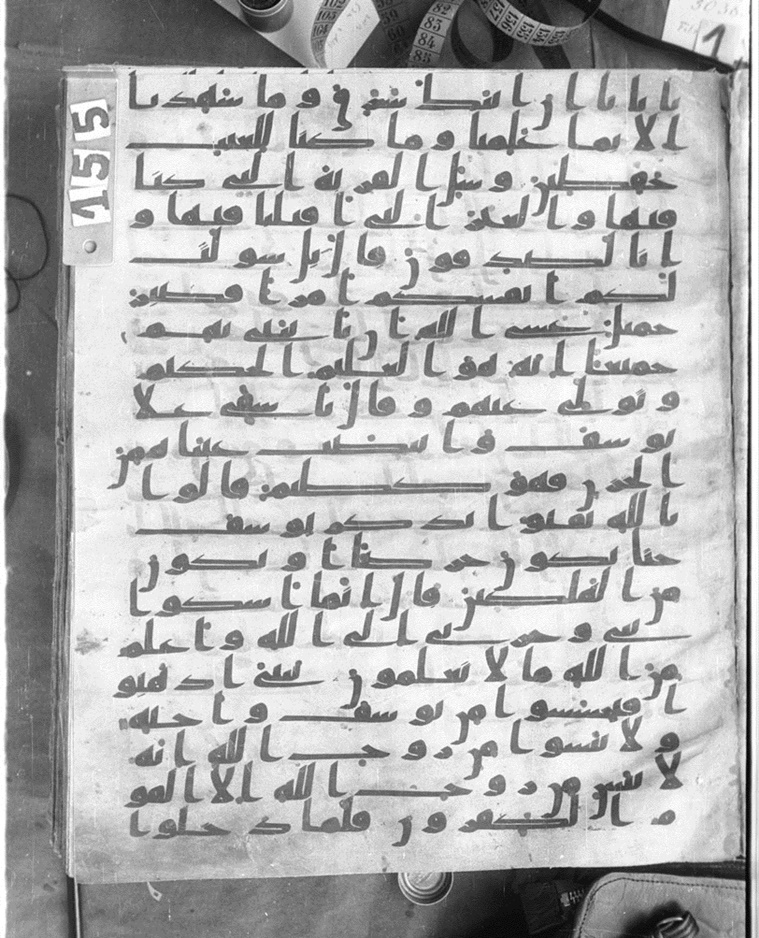

.jpg)
And there will not be for them on earth (any protector or helper.) Sana'a manuscript, ‘DAM 0 1-27.1’, translation: ‘… (if) they turn away, Allah will punish them in this world. Sahih International translation: ‘… (if) they turn away, Allah will punish them with a painful punishment in this world and the Hereafter. Several words are missing within a paragraph leading to a different meaning: 4 These changes represent only a very small part of a much bigger, in-depth analysis conducted by Dr E. In the following examples, changed words from the primary writing are compared with the Standard text (StT). The normal ones identify the lines in the later, secondary text. The numbers on the right side of the image written in cursive type refer to the lines of the earlier, primary text. ‘Folio 16r’ 2 below contains Surah 9:70-80 in the less visible primary writing and Surah 30:26-40 in the better visible secondary writing. Since on the majority of the leaves a primary text is visible and both texts contain parts of over 70 % of today’s Quran, the palimpsest must be a remnant of two, previously complete, yet different Qurans. They were each written on parchment with an approximate size of 36.5 x 28.5 cm. The palimpsest known as ‘DAM 0 1-27.1’ contains at least 38 Quran leaves. The characteristic, irregular lines of that particular style exist in all the four above mentioned developmental stages of the text. This is confirmed by the fact that the primary writings that reappeared and the secondary ones that followed, including the corrections of both, were found to be made in the ‘Hijazi’ style of the first Islamic century. However, in the case of ‘DAM 0 1-27.1’ it took place within the first century of the ‘Hijrah’ (7 th and early 8 th century AD), shortly after the Uthmanic recension. Such a process would normally only be done after several centuries.

The find is part of a bundle of parchments thought to be the oldest surviving copies of the Quran.Ī palimpsest is a manuscript from which a text has been scraped or washed to make room for another one in order to re-use the expensive parchment. They range from different and missing words and dissimilar spelling to a changed order of Surahs and words within verses. According to the latest academic studies, aided by the use of ultraviolet photography, this palimpsest contains many differences when compared with today’s Arabic Quran. The fundamental Islamic belief that no word of the Quran has changed is put in question by a rather unique ancient manuscript, a palimpsest, known as ‘DAM 0 1-27.1.’ 1 It was discovered by Muslims in 1972 at the ancient Great Mosque of Sana'a in Yemen. Not one word of its 114 chapters, Suras, has been changed over the centuries, so that the Quran is in every detail the unique and miraculous text which was revealed to Muhammad fourteen centuries ago.” ( search for ‘What is the Qur`an?’ accessed ) It was memorized by Muhammad and then dictated to his Companions, and written down by scribes, who cross-checked it during his lifetime. “ The Quran is a record of the exact words revealed by God through the Angel Gabriel to the Prophet Muhammad.


 0 kommentar(er)
0 kommentar(er)
